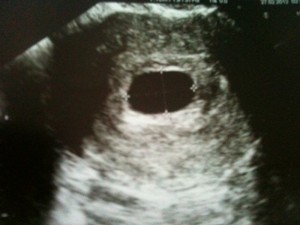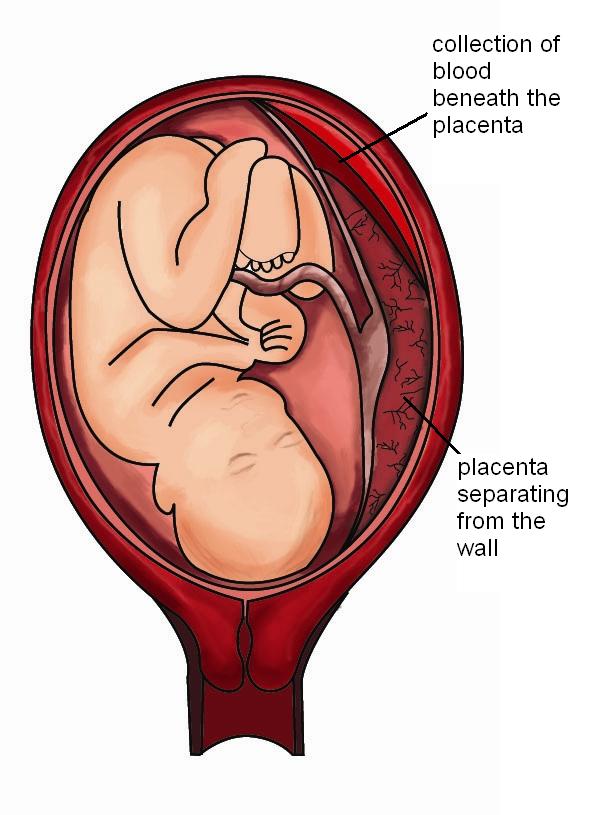Have you been lately experiencing pain and burning sensation in your vaginal area, which seems to get worse after intercourse? If yes, you might be affected by a condition known as Vulvodynia. Read on to find out all about the disease, including its possible causes, symptoms, diagnosis, treatment options and more.
Vulvodynia Definition
Page Contents
- 1 Vulvodynia Definition
- 2 Vulvodynia ICD9 Code
- 3 Vulvodynia Incidence
- 4 Vulvodynia Types
- 5 Vulvodynia Symptoms
- 6 Vulvodynia Causes
- 7 Vulvodynia Risk Factors
- 8 Vulvodynia Diagnosis
- 9 Vulvodynia Differential Diagnosis
- 10 Vulvodynia Treatment
- 11 Vulvodynia Home Treatment
- 12 Vulvodynia Coping and Support
- 13 National Vulvodynia Association
- 14 Vulvodynia Prognosis
- 15 Vulvodynia Complications
The term “Vulvodynia” refers to a chronic or persistent painful sensation around the vulval (vaginal) opening that seem to arise without any apparent cause.
The condition can persist for many months or even years. It is also known by the name Vestibulodynia.
Vulvodynia ICD9 Code
The ICD9 Code for this disorder is 625.7. The ICD9 group 625 is designated for pain and other conditions of the female genital organs.
Vulvodynia Incidence
The condition can affect women within the age group 20-60 and even above. As per an Australian study, the disorder often originates early and has its highest prevalence in women below 25 years of age. The average age of onset for the primary cases of the condition is 19 years.
According to estimates, the disorder affects anywhere from 200,000 to six million women. The condition was once supposed to affect females primarily of white origin. Now, women of Hispanic and African-American origin are known to be affected in an equal measure.
Vulvodynia Types
The pain may be localized to a particular spot (such as vaginal opening or vestibule) or may be generalized, i.e. felt in the entire area. Depending on the location of pain, Vulvodynia is categorized into two subtypes:
Generalized Vulvodynia
It is characterized by painful symptoms in various regions of the vulva, arising at varying periods of time. The pain may be continuous or intermittent. Touching or pressing the affected area may or may not act as a trigger factor for the symptoms although doing so may worsen the pain.
Vulvar Vestibulitis Syndrome
It refers to pain in the vestibule, or the entry point of the vagina. This is often experienced as a burning sensation and arises only after the vestibule is pressed or touched, as occurs at the time of intercourse.
Vulvodynia Symptoms
The condition is marked by irritation, burning or painful sensations around the vaginal aperture that makes it difficult for affected individuals to sit for long durations or have sex. Patients may also experience other sensations in their vaginal opening, such as stinging, itching, throbbing or even rawness.
The painful sensations experienced may be sporadic or continuous and may persist for many months or even years. However, the difficulties may vanish all of a sudden and as rapidly as they originate. The vulvar tissue may look slightly swollen in some patients. In the majority of sufferers, however, it appears normal.
A similar condition, known as Vulvar Vestibulitis, may lead to painful sensations only when pressure is exerted over the region that surrounds the vaginal entrance.
Vulvodynia Causes
Doctors are yet in the dark regarding the exact causes of this condition. However, they have pinpointed certain contributory factors. These include:
- Past cases of vaginal infections
- Irritation of or injury to the nerves around the vulvar area
- Changes in hormone levels
- Allergies or a localized hypersensitivity of the patients’ skin
The majority of women affected by the disease are found to have a medical history of vaginal yeast infections or recurrent vaginitis.
Some women with the disease are found to have been victims of sexual abuse. However, the majority of sufferers do not have any contributory factors. The condition is not sexually transmitted. It is not a sign of cancer.
Vulvodynia Risk Factors
Certain possible factors, that may increase the risk of occurrence of this disorder, include:
- Irritable bowel syndrome (IBS)
- Fibromyalgia
- Chronic bladder infections
- Vaginal infections
- Human papillomavirus in vulval biopsy
- Long-term use of topical vulval preparations
Vulvodynia Diagnosis
Patients are usually asked a number of questions to allow doctors have a better understanding of their medical history and also to let them know about the nature, location and extent of the problems.
As part of the evaluation, physicians may also perform the following exams:
Cotton swab test
In this exam, a physician uses a moist cotton swab to gently rub over the vulvar region of patients and check for particular localized areas of pain.
Pelvic exam
In this test, physicians visually examine the vagina and the external genitals of patients for signs of infection or some other cause of the problems. Even in the absence of a visual evidence of infection, a physician may extract a few cells from the vagina as samples to test them for vaginal infection, such as bacterial vaginosis or yeast infection.
Vulvodynia Differential Diagnosis
The differential diagnosis for Vulvodynia involves distinguishing its symptoms from those of similar conditions, which include:
- Allergic vulvitis
- Lichen sclerosus
- Vulval atrophy
- Vaginismus
- Lichen planus
- Pudendal canal syndrome
- Vulval intraepithelial neoplasia
- Chronic candidal vulvovaginitis
Vulvodynia Treatment
The treatment for this disorder aims to alleviate the symptoms. There is no one-size-fits-all curative method for the condition and a varying combination of treatments seems to work well for each sufferer. The symptoms may take several weeks or even months to improve noticeably.
The curative options may involve:
Medicines
Chronic pain may be lessened with the implementation of anticonvulsants and tricyclic antidepressants. Patients may find relief from itching sensations with the use of antihistamines.
Local anesthetics
Medicines like Lidocaine ointment may provide temporary relief from symptoms. A physician is likely to recommend application of Lidocaine half an hour before intercourse to reduce discomforts. However, the sexual partner of a woman applying Lidocaine may experience temporary numbness after sexual contact.
Nerve blocks
Women who suffer from chronic pain, and do not respond to other curative methods, may benefit from local nerve block injections.
Biofeedback therapy
This curative technique helps reduce pain by teaching sufferers how to control the specific responses of their body. This therapy actually aims to help patients relax their pelvic muscles to reduce the painful sensations. In women affected with Vulvodynia, the pelvic muscles tend to contract in anticipation of pain and can actually give rise to chronic pain.
Pelvic floor therapy
Many Vulvodynia sufferers face difficulties with the pelvic floor muscles that support the bladder, bowel and uterus. Pelvic floor therapy involves teaching patients a system of exercises that may provide relief from painful symptoms.
Surgery
In cases where pain is specifically localized to the hymenal ring, surgery to remove affected tissue and skin (known as Vestibulectomy) helps alleviate pain in some women.
Vulvodynia Home Treatment
The home remedies for curing this condition involve:
Cold compresses
Direct application of cool compresses over the external genital region may help reduce itchiness and pain.
Hot baths
Taking sitz baths for 2-3 times a day, for 5-10 minutes in each session, can also provide relief from symptoms. However, affected women should avoid spending a lot of time in hot water as it may cause itching and discomforts.
Gentle washing
Washing the vulvar area gently with plain water and patting the region dry can also help alleviate the symptoms. After bathing, application of a preservative-free emollient (like plain petroleum jelly) can be beneficial. One should avoid harshly scrubbing or washing the affected region, to prevent irritating it.
Avoiding certain activities
Avoiding some activities, such as riding on horseback or motorbikes, can benefit women affected by this condition by preventing irritation and compression of the vulvar area.
Use of antihistamine
Using an antihistamine may help alleviate itchiness and allowing patients to rest better.
Use of lubricants
Sexually active women should apply lubricants prior to indulging in sexual activities involving vaginal penetration.
Avoiding use of tight garments
Tight undergarments prevent flow of air to the genital region and often lead to increase in moisture and temperature which leads to irritation. Wearing white cotton underwear can increase ventilation and promote dryness of the vaginal region. It is better to sleep without underwear during night. Nylon underwear and tight-fitting pantyhose can irritate the region and restrict air-drying of the vulvar skin.
Vulvodynia Coping and Support
Support groups and counseling can be beneficial for many sufferers. Patients may find it useful to talk with other women suffering from the same condition. Consulting others can help them get more information and understand that they are not the only ones to be affected by this disorder. Those who are not comfortable with support groups may ask their physicians about good counselors whom they can get in touch with and benefit from.
Those experiencing painful sensations in their genital region should consult their doctor or contact a reputed gynecologist. It is important that physicians rule out the presence of skin ailments, microbial infections or medical issues such as diabetes that might be the possible causes of vulvar pain and irritation. Once doctors evaluate the particular symptoms experienced by sufferers, they can recommend ways or treatment options that can help them manage the painful sensations.
National Vulvodynia Association
Patients of Vulvodynia can get in touch with the National Vulvodynia Association. It is a non-profit organization set up with the objective of helping women affected by Vulvodynia and other associated ailments.
The registered address and contact details of this organization have been provided below:
National Vulvodynia Association
PO Box 4491
Silver Spring, MD 20914-4491
301-299-0775 (phone)
301-299-3999 (fax)
Vulvodynia Prognosis
In researches conducted on select groups of women, the majority of sufferers have been found to report of improvement with proper treatment. Proper cure helps alleviate pain and other problems associated to this condition.
Vulvodynia Complications
The condition may result in the following complications for its sufferers:
- Depression
- Anxiety
- Reduced quality of life
- Sexual dysfunction
- Sleep disturbances
- Problems in maintaining relationships
- Past history of sexual abuse
- Changed perception of body image
The disorder can be painful and quite frustrating for its sufferers and can reduce their sexual activity, thus giving rise to emotional difficulties. The fear of having pain during sex can cause muscular spasms in the area around the vagina (Vaginismus).
If you suspect yourself to be having problems similar to Vulvodynia, do not feel embarrassed or hesitate to seek treatment. Treated timely, the condition can cause less pain and discomfort and allow patients to lead a better quality of life.
References:
http://www.patient.co.uk/doctor/Vulvodynia.htm
http://www.mayoclinic.com/health/vulvodynia/DS00159
http://women.webmd.com/guide/vulvodynia
http://www.bbc.co.uk/health/physical_health/conditions/vulvodynia1.shtml


